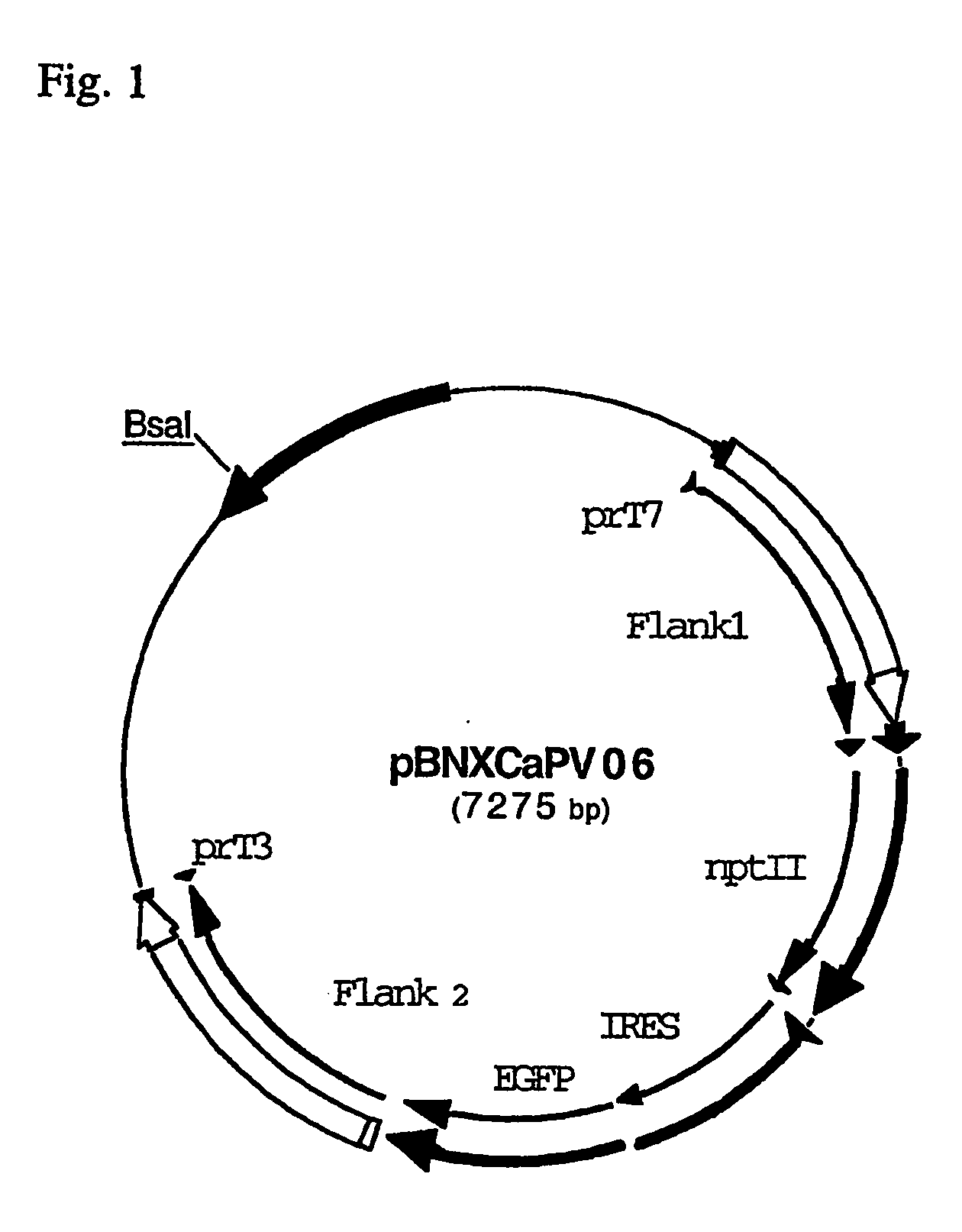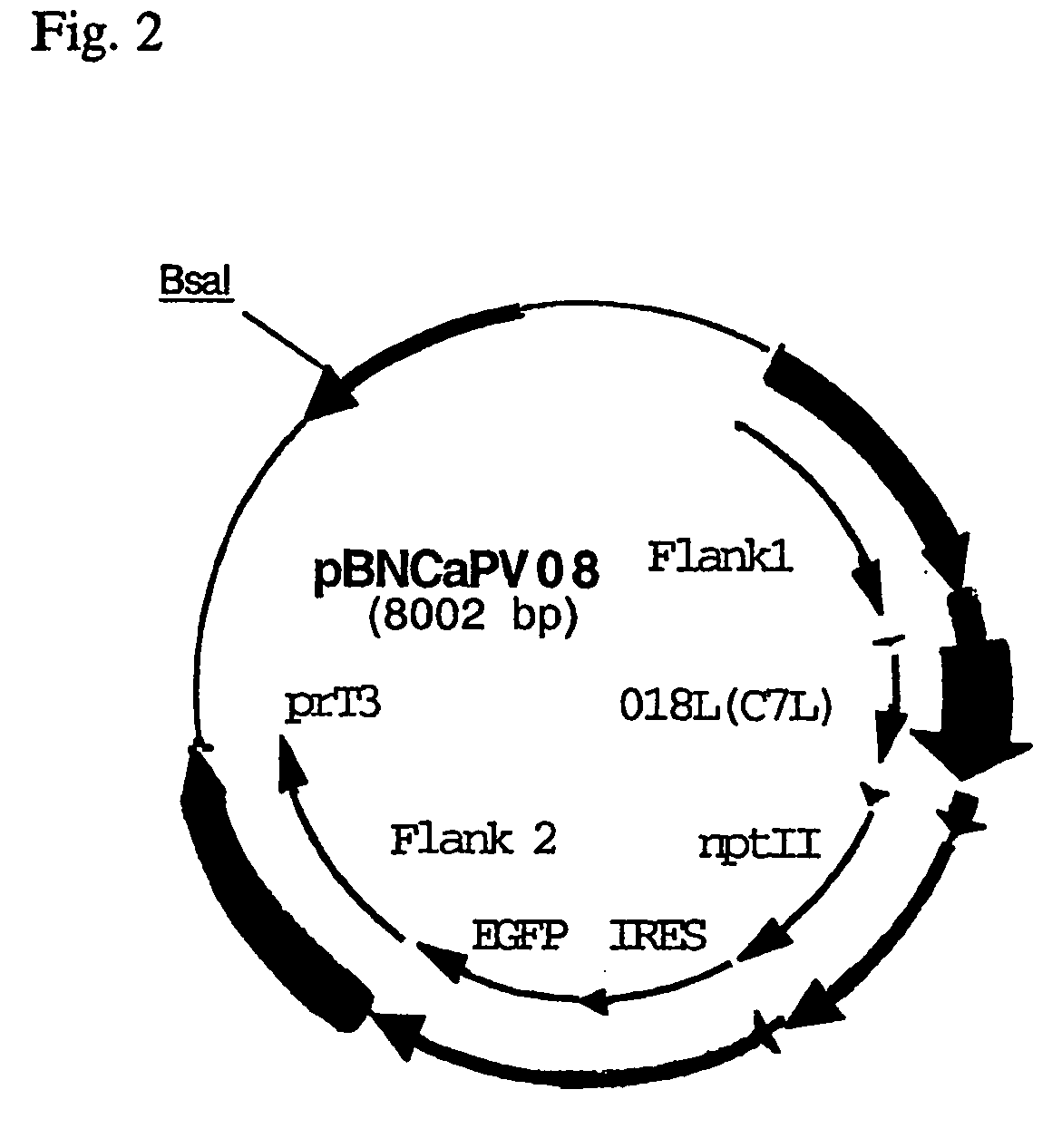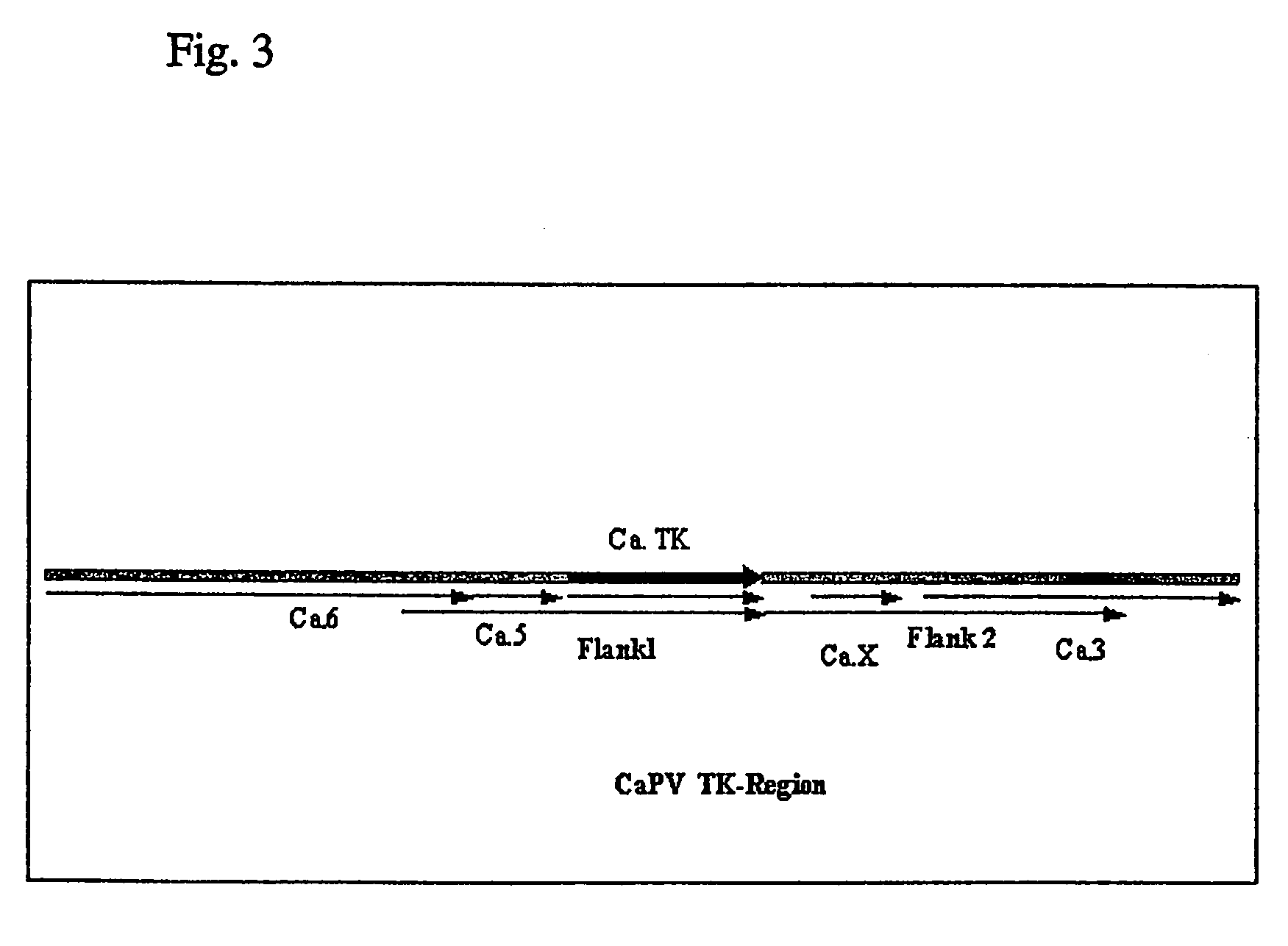Vaccinia virus host range genes to increase the titer of avipoxviruses
a technology of avian cells and host range genes, which is applied in the field of avian cell titer increase can solve the problems of high neurovirulence of strains, poor suited for human and animal use, and low titer of avian cell titer, so as to achieve the effect of increasing the amount of viruses
- Summary
- Abstract
- Description
- Claims
- Application Information
AI Technical Summary
Benefits of technology
Problems solved by technology
Method used
Image
Examples
example 1
Construction of Recombinant Canarypox canBNX01 (pS NPTII IRES EGFP) and canBN01 (pS NPTII IRES EGFP C7L-MVA)
Summary:
[0064] This example describes the generation of recombinant Canarypox virus using NPTII (neomycin resistance gene) and EGFP (green fluorescent protein) selection. The Vaccinia Virus host range gene C7L was cloned into an intergenic region of Canarypox by homologous recombination. After two plaque purifications (PP) there was no wild type virus detectable but only recombinant virus. Sequencing of the integration region showed proper integration and no mutations. RT-PCR showed successful expression of the integrated genes, namely the C7L gene from Modified Vaccinia Ankara and the marker gene cassette. The recombinant virus was shown to be stable up to passage number twenty, even without the selective pressure of Geneticin®.
Introduction:
[0065] The aim of this example was to construct a recombinant Canarypox virus expressing the Vaccinia Virus host range gene C7L plu...
example 2
Multistep Growth Curve Analysis of Recombinant Canarypox canBNX01 (pS NPTII IRES EGFP) and canBN01 (pS NPTII IRES EGFP C7L-MVA)
Summary:
[0103] The aim of this example was to investigate replication of a recombinant Canarypox virus expressing the human (tissue culture) host range gene C7L under regulation of the natural promoter in a multistep growth curve on several cell lines. Multistep growth curve means that infection is performed on a low moi (multiplicity of infection), which enables to investigate viral spread and replication. The results indicate that the recombinant Canarypox has improved growth properties on CEF cells resulting in titers, which are one log higher than those of the control virus expressing the marker cassette only. The replication properties on several mammalian cell lines (human, monkey and rabbit cell lines) remains non-effected, which means that the recombinant virus seems to be as attenuated as the control virus.
Introduction:
[0104] This example eval...
PUM
| Property | Measurement | Unit |
|---|---|---|
| temperature | aaaaa | aaaaa |
| temperatures | aaaaa | aaaaa |
| concentration | aaaaa | aaaaa |
Abstract
Description
Claims
Application Information
 Login to View More
Login to View More - R&D
- Intellectual Property
- Life Sciences
- Materials
- Tech Scout
- Unparalleled Data Quality
- Higher Quality Content
- 60% Fewer Hallucinations
Browse by: Latest US Patents, China's latest patents, Technical Efficacy Thesaurus, Application Domain, Technology Topic, Popular Technical Reports.
© 2025 PatSnap. All rights reserved.Legal|Privacy policy|Modern Slavery Act Transparency Statement|Sitemap|About US| Contact US: help@patsnap.com



